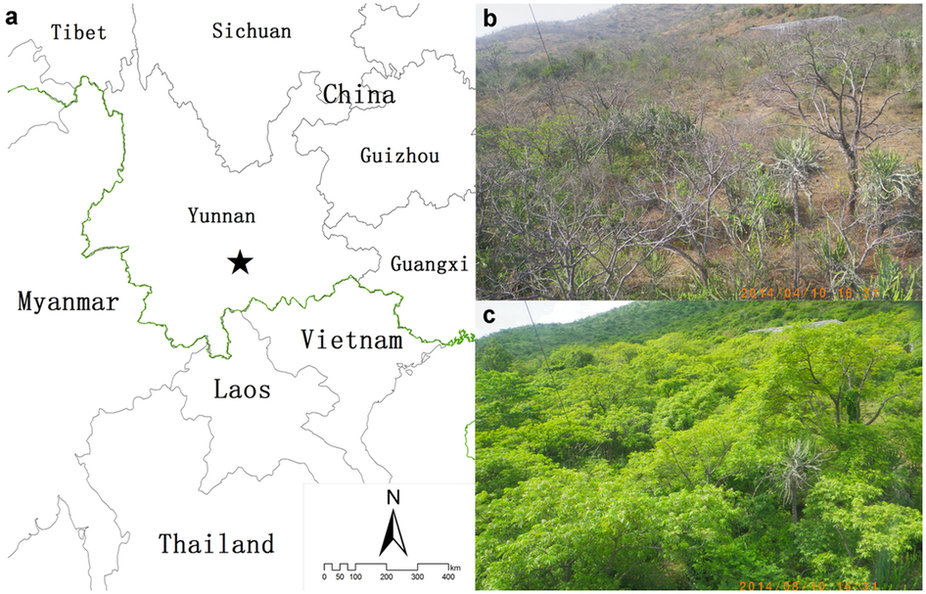The Yuanjiang savanna is the most typical and representative of Chinese savannas. Research on the spatiotemporal characteristics of carbon exchange and its responses to biotic and abiotic controls on savanna ecosystems is of great importance. However, there has not been any research on how and why carbon fluxes change, particularly seasonally, over savanna ecosystems in China.
Prof. ZHANG Yiping and his team of Xishuangbanna Tropical Botanical Garden (XTBG) applied biometric-based method (BM) and eddy covariance technique (EC) to determine carbon exchange over the Yuanjiang savanna ecosystem in Southwest China. They used the BM to measure the net ecosystem production (NEP) and EC to measure the net ecosystem carbon exchange (NEE) during the period May 2013 to December 2015.
The results obtained using the BM (0.96 tC ha−1 yr−1) and EC (1.30 tC ha−1 yr−1) indicate that the Yuanjiang savanna ecosystem is an appreciable carbon sink, although under the control of high mean annual temperature (24.0 °C), high maximum mean monthly temperature (maximum MMT; 29.2 °C), but low mean annual rainfall.
They found that the carbon use efficiency (CUE; i.e. the ratio of net primary production and gross primary productivity) was slightly higher than the mean CUE of all forests. The carbon exchange varied dramatically between the dry season (when the savanna is nearly carbon-neutral or a small carbon sink o) and the wet season (when the savanna is an appreciable carbon sink). The ecosystem was more efficient during the wet season than the dry season.
They also found that the carbon sink strength of Yuanjiang savanna was close to the mean carbon sink ability of savannas globally.
The researchers proposed that corresponding policies or management practices should be given to savanna ecosystems, because the carbon sequestration capacity (i.e., the amount of CO2 that the savanna ecosystem can take up) will decrease in the future under ongoing climate change.
The study entitled “Eddy covariance and biometric measurements show that a savanna ecosystem in Southwest China is a carbon sink” has been published in Scientific Reports.
Contact
ZHANG Yiping Ph.D Principal Investigator
Key Laboratory of Tropical Forest Ecology, Xishuangbanna Tropical Botanical Garden, Chinese Academy of Sciences, Mengla, Yunnan 666303, China
Tel: 86-871-65160904
E-mail: yipingzh@xtbg.ac.cn

Geographical location and vegetation of Yuanjiang savanna
(a) Location of the study site (black star);
(b) savanna vegetation in the dry season and
(c) in the wet season.
(Images by FEI Xuehai)

